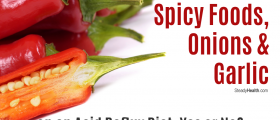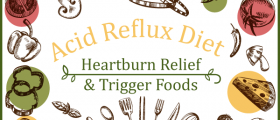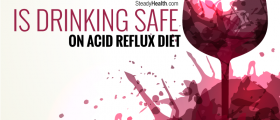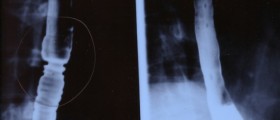Who is Susceptible to Acid Reflux?
Acid reflux is usually associated with adults. Particularly with adults with bad dietary habits such as eating too much, eating late, eating too hot, too spicy, and too oily food, as well as with people who are overweight. But within the last few years, gastric reflux (another name for acid reflux) is becoming widespread in the teenage population as well. The cause of this can be eating all the wrong foods, but gastric reflux might affect even teenagers that are otherwise healthy and have proper eating habits.
Mechanism of Acid Reflux
Food that we have eaten first comes to the stomach. The walls of the stomach secrete powerful acid, known as stomach acid. Its chemical name is hydrochloric acid, and its chemical symbol is HCl. Its purpose is to soften and dissolve food particles and make the food much more susceptible to enzymes that will crack it down to molecules while it passes through the intestines, and turn it into a form that can be absorbed into the body.
Obviously, stomach content is full of acid. This is fine with the stomach, as its walls are acid-proof, and excess acid will be neutralized when the food moves in the intestines.

Under normal circumstances, the food goes one way, and should not return travel up save when we are vomiting. The stomach is connected to the mouth via a tube known as the esophagus. It is sealed by sphincter muscles (these work as valves) that are located on the top and the bottom of it.
The lower esophageal sphincter makes sure that the food stays in the stomach. In some cases, the contents of the stomach manage to flow past the lower esophageal sphincter (when it is not closed completely or open at the wrong time) and into the esophagus. The acid in the refluxed content burns the walls of the esophagus (these are not even acid resistant) and causes pain and discomfort.
So What About Teenagers?
Acid reflux in teenagers need not be associated with gastroesophageal reflux disease, anyone can experience it, particularly after indulging in the wrong type of dietary habits. But leaving this untreated can lead to GERD and later to other complications, even serious conditions such as cancer.
- The prevalence of GERD in children varies according to age and country. In USA, 5-8.2% in children in ages of 10 to 17 years was diagnosed with weekly GERD symptoms. 12.4% in children performed endoscopy was diagnosed with EE. While in UK, 10.9/1,000 persons per year for the period of 2000 and 2005 have reported to have a newly diagnosed reflux esophagitis.
- In adult studies, the prevalence of GERD (ex: weekly heartburn or acid regurgitation) in Asia has been known to be less (5%) than Western countries (20%). Meanwhile, Korean adult patients with erosive reflux esophagitis visiting a secondary or tertiary hospital were reported to have its prevalence rate of 11.8%. In Korean children with upper abdominal pain, EE was reported to be 5.7% in 1992 and 19.9% in 2008, respectively.
- Other GERD children's complaints were mostly epigastric pain and regurgitation (over 60%). Heartburn was reported to be 18.6% in EE children and 2.9% in NERD children. The frequency of EE seemed to be similar to that of NERD in GERD children.
- About 39-42% of GERD children and adolescents (ages of 6 to 17 years) had either a history of gastro-esophageal reflux (GER) in infancy and/or a strong family history of GER. Generally speaking, childhood GERD often continues to develop into adulthood GERD, indicating that this is a life-long disease which may even turn into Barret's esophagus, ulcer, and/or stricture.
- In children and adolescents, their lifestyles associated with heartburn have to be addressed. Korean children with GERD had their diet related to overeating, eating late at night, drinking soda, eating salty, spicy, or greasy foods, though they were rated not to be obese. A history of small for gestational age or preterm may been linked to an esophageal adenocarcinoma later. Other factors include history of chronic respiratory disorder such as child or teen-aged wheezer or adolescent onset asthma. Moderate obese (16%) and extreme obese children (32%) are likely to have more GERD comparing to normal weight children.
- Though there is no golden standard for the GERD test battery yet, a combination of tests is generally required in order to properly diagnose GERD. The initial stage assessment should involve a thorough history taking with a physical examination, and an empirical trial (2 weeks) of PPI or histamine-2 receptor antagonist (H2RA).
Symptoms and Treatment
Symptoms such as bad breath, dry cough, sore throat, sour or acid taste in the mouth, frequent “wet” burps, difficulty swallowing, or feeling that food gets stuck in the throat might be indicative of gastric reflux if they appear frequently. Proper diagnosis is possible only after a medical exam which will include tests for gastric reflux.
Treatment is similar as in persons that have GERD – by changes in lifestyle and eating habits, avoidance of problematic kinds of food, and eventually soothing symptoms with prescription-free medicines. Your family physician will provide you with specific advice.
- medlineplus.gov/gerd.html
- www.nhs.uk/conditions/heartburn-and-acid-reflux/
- Photo courtesy of Marco Verch Professional Photographer via Flickr: www.flickr.com/photos/30478819@N08/51184305893

















Your thoughts on this
Loading...